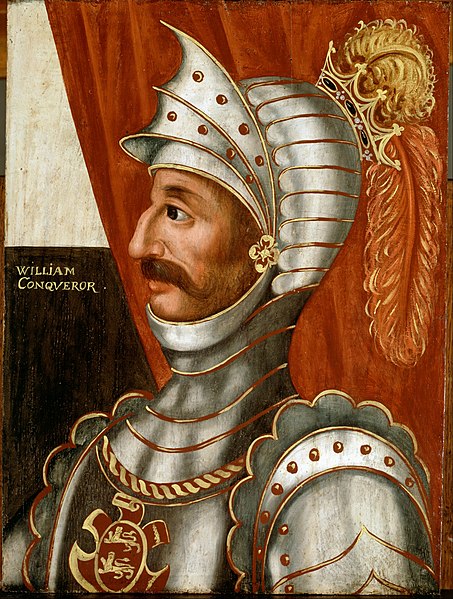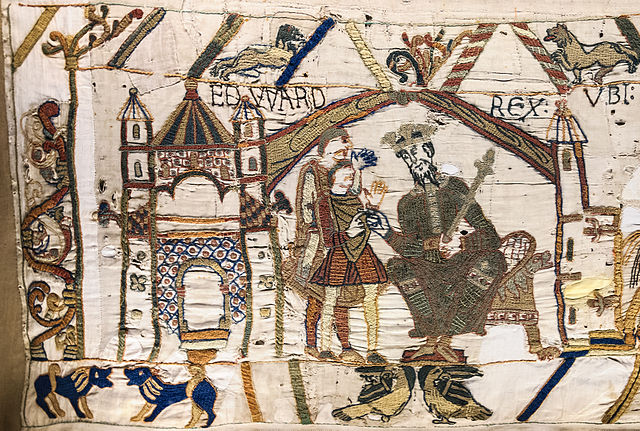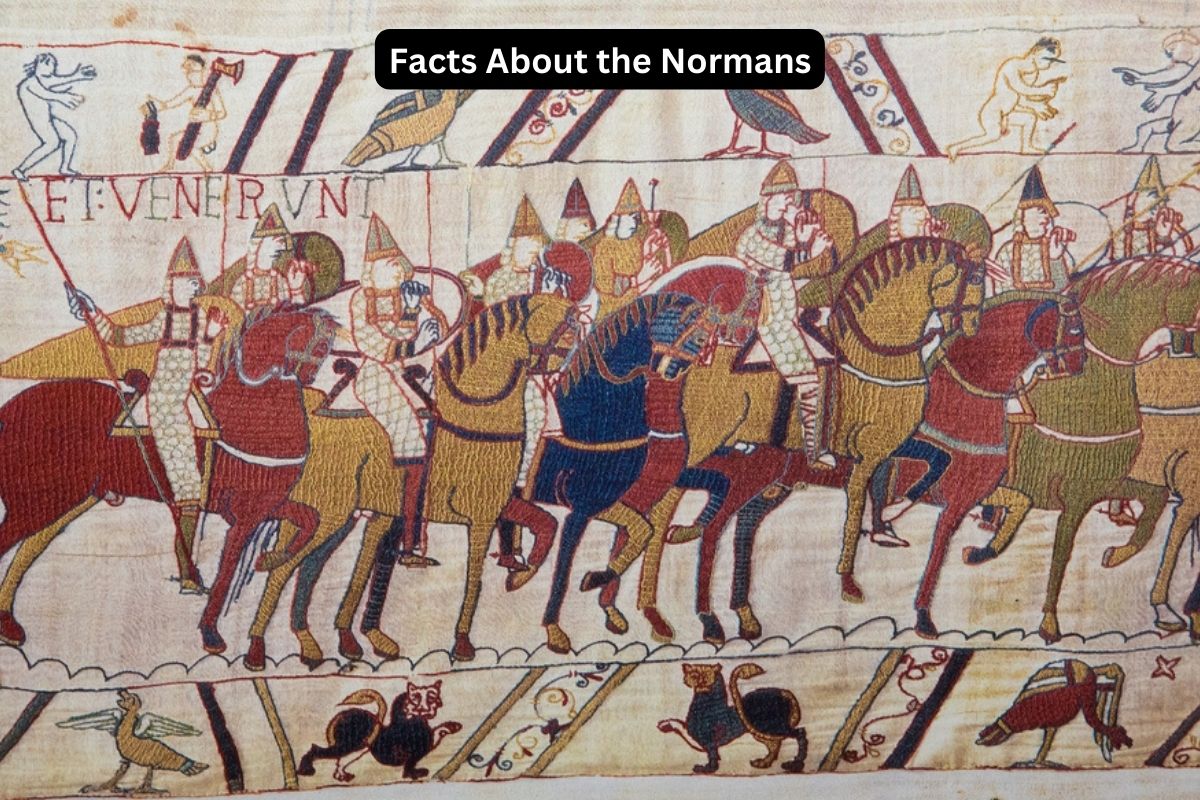The Normans were a medieval European people whose legacy continues to shape the history and culture of Europe and beyond. Originating from Viking ancestry, they settled in the region of Normandy in northern France in the 10th and 11th centuries.
The Normans left an indelible mark on the medieval world, with their influence extending from the British Isles to the Mediterranean and the Holy Land.
Known for their military conquests, architectural achievements, and linguistic contributions, the Normans played a pivotal role in shaping the course of European history.
This introduction sets the stage for a deeper exploration of the Normans and their multifaceted impact on the medieval world and beyond.
Normans Facts
1. Originated from Viking ancestry in Scandinavia
The Normans trace their ancestry back to the Vikings, specifically the Norsemen from Scandinavia. These Norsemen were known for their seafaring and warrior culture, often raiding and settling in various parts of Europe.
Also Read: Facts About William the Conqueror
Over time, some of these Viking groups moved westward, eventually reaching the region that would become Normandy in northern France.
2. Settled in Normandy, France, in the 10th and 11th centuries
In the 10th and 11th centuries, Viking settlers, also known as Norsemen or Northmen, established a significant presence in what is now Normandy, a coastal region in northern France.
Also Read: Anglo Saxons Facts
This settlement process involved both conquest and assimilation into the local Frankish culture. Over the generations, the Norsemen adopted the French language and customs, transforming into what we now recognize as the Normans.

3. William the Conqueror led the Norman Conquest of England in 1066
Perhaps the most famous Norman figure in history is William, Duke of Normandy, commonly known as William the Conqueror. In 1066, William led the Norman Conquest of England.
He claimed that he was the rightful heir to the English throne, and after the famous Battle of Hastings, he emerged victorious.
This event is a pivotal moment in English history, resulting in William becoming King of England. His reign saw the fusion of Norman and Anglo-Saxon cultures, significantly impacting the English language, legal system, and overall culture.
4. Known for building stone castles and cathedrals
Norman architecture is renowned for its distinctive style, characterized by massive stone structures and a blend of architectural elements.
Norman castles, for example, were among the most impressive and formidable in medieval Europe. They often featured square keeps, curtain walls, and defensive features like moats and drawbridges.
Norman cathedrals, such as Durham Cathedral in England and the Palermo Cathedral in Sicily, showcased a unique blend of Romanesque and Byzantine influences. They were known for their ornate facades, round arches, and sturdy construction.
The architectural legacy of the Normans left a lasting impact on Europe, influencing subsequent styles, including the transition to Gothic architecture.
5. Established the Kingdom of Sicily in the Mediterranean
In the 11th and 12th centuries, Normans under leaders like Roger II established the Kingdom of Sicily in the southern part of Italy. This kingdom was a multicultural society where Normans, Byzantines, Arabs, and indigenous Sicilians coexisted.
Norman Sicily was known for its tolerance of various religions and cultures, allowing for the flourishing of art, science, and learning.
The Norman monarchs of Sicily left a rich legacy of art and architecture, with the Palatine Chapel in Palermo being a prime example of their artistic achievements.

6. Expanded to regions such as Ireland, Wales, and southern Italy
Beyond England and Sicily, the Normans had a significant presence in other regions. In Ireland, they established the Norman Lordship of Ireland, leading to the Anglo-Norman colonization of the island.
In Wales, Norman lords built numerous castles and sought to exert control over Welsh territories. The Normans also played a role in the Crusades. Bohemond I, a Norman leader, was a prominent figure in the First Crusade and played a key role in capturing Antioch.
7. Developed the Old Norman language, influencing English
The Normans developed their unique language, known as Old Norman or Old French. This language emerged as a result of the Viking settlers’ assimilation with the local Frankish culture in Normandy.
Over time, Old Norman evolved into Anglo-Norman, which became the language of the Norman nobility in England. It left a significant mark on the English language, particularly in legal and administrative terminology.
8. Left a lasting impact on European architecture
The Normans’ architectural achievements had a profound and lasting impact on European building practices. Their castles and cathedrals, characterized by massive stone structures and a blend of architectural elements, influenced subsequent architectural styles.
Iconic examples include the Tower of London, a Norman castle, and Durham Cathedral, which seamlessly combined Norman Romanesque and Gothic styles. These structures continue to stand as tangible reminders of the Normans’ architectural prowess.
9. Their legacy is seen in landmarks like the Tower of London
One of the most iconic and enduring symbols of Norman influence in England is the Tower of London.
This historic fortress and former royal palace, located on the north bank of the River Thames in the heart of London, stands as a testament to the Normans’ architectural prowess and their impact on English history and culture.
- Norman Construction: The Tower of London was commissioned by William the Conqueror in 1078, shortly after his conquest of England. It was originally built as a symbol of Norman power and as a defensive fortress to control London and protect against potential rebellions.
- Architectural Significance: The Tower’s architecture showcases quintessential Norman features. It includes a massive stone keep, often referred to as the White Tower, which exemplifies the strength and durability of Norman construction. The White Tower’s design is characterized by thick walls, small windows, and imposing dimensions, all typical of Norman castles.
- Evolution and Use: Over the centuries, the Tower of London evolved from a military stronghold into a royal residence, a prison, a treasury, and a place of execution. Its history is intertwined with that of England’s monarchs and the country’s political and social development.
- Cultural Significance: The Tower of London is not just a historic structure but also a symbol of English monarchy and authority. It has played a role in various key events in English history, including the imprisonment of notable figures like Anne Boleyn, Thomas More, and Lady Jane Grey.
- Tourist Attraction: Today, the Tower of London is a UNESCO World Heritage Site and a popular tourist attraction. Visitors can explore its rich history, see the Crown Jewels, and learn about its role in England’s past.
The Tower of London stands as a tangible reminder of Norman influence in England. Its enduring presence and historical significance highlight the Normans’ impact on English architecture, culture, and the enduring legacy they left in the heart of London.
10. Norman influence persists in English language and law
The Norman influence on language and law continues to resonate in modern times. Anglo-Norman terminology significantly enriched the English language, particularly in the realms of law and administration.
Terms such as “jury,” “court,” and “evidence” have their roots in Anglo-Norman. Additionally, the Norman legal system, characterized by concepts like trial by combat and feudal law, played a crucial role in the development of English law and governance, shaping the legal institutions that persist today.
